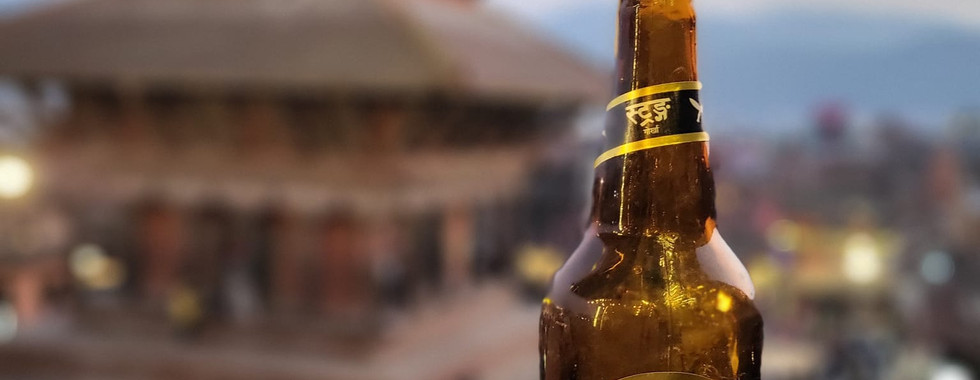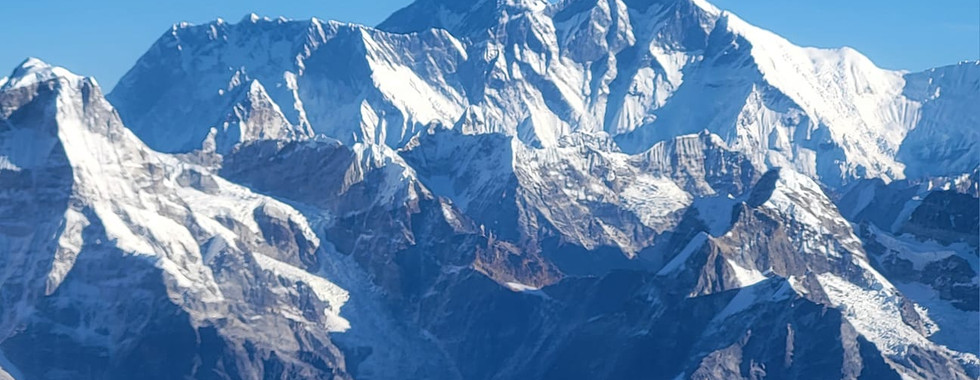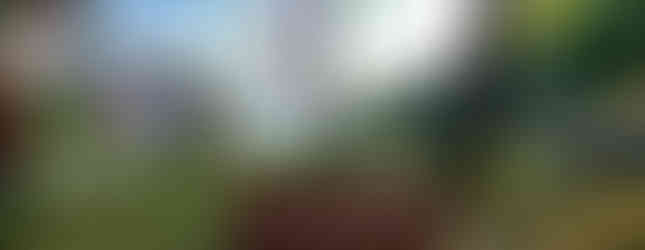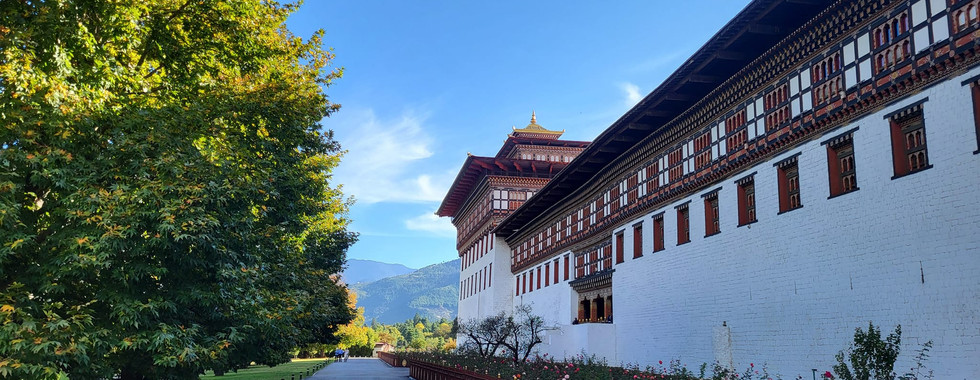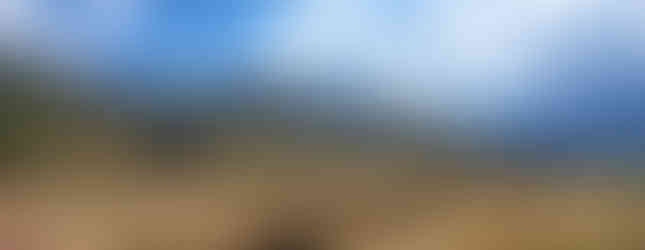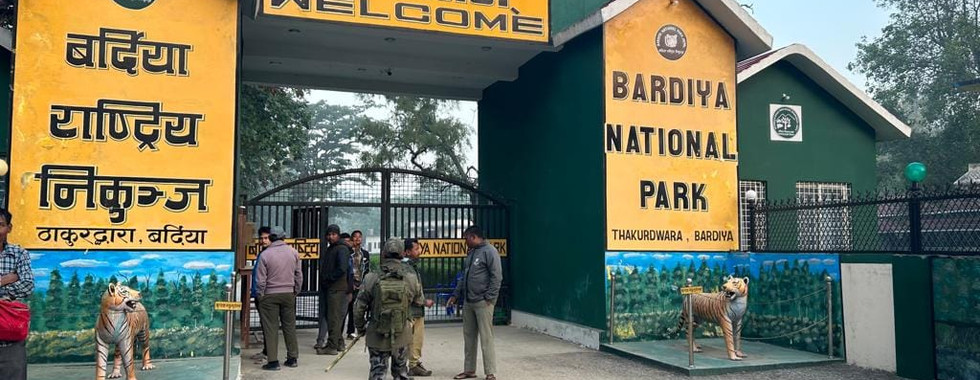- Stephen Pfaller
- Oct 17, 2024
- 9 min read
Updated: Dec 16, 2024

A Trip Report from Nepal and Bhutan:
Traveling to Nepal and Bhutan offers an extraordinary journey into the heart of the Himalayas, where ancient traditions, awe-inspiring landscapes, and spiritual serenity merge to create an unforgettable experience. Nepal, home to towering peaks like Mount Everest and vibrant cities like Kathmandu, captivates with its rich history, bustling markets, and sacred temples. Bhutan, on the other hand, is a tranquil, mystical kingdom known for its commitment to environmental sustainability, Gross National Happiness, and untouched natural beauty.
Alas, you are not here for a Guide to Nepal and Bhutan, that can be found in plenty of places. Possibly, you are here because you're curious how my trip went. More likely, you are here to find out how the hell I met a King, saw a Tiger, and visited Mount Everest all in a single trip! Most assuredly, you are hoping to gain some insight into how you can do it too. So let's get to it!
The Why and the How...for those interested in such things
The Why
The How
Part 1: Flying to Mount Everest


Acclimating in
K-K-K-K-K-K Katmandu
Sitting at 4,500ft elevation, Kathmandu, was the perfect place to acclimate both to the altitude and the splendidly controlled chaos of Kathmandu. Best likened to a coral reef or a cloud forest: Kathmandu is life on top of life on top of life.
The Tibetan Buddhist neighborhood of Boudha suited us best for our initial introduction to Nepal and the Himalayas. Centered around the Boudhanath Stupa, one of the largest in the world, Boudha is a UNESCO World Heritage Site and a pilgrimage point for Tibetan refugees. Particularly atmospheric at night, walking clockwise as is tradition, the stupa is ringed with shops and restaurants selling momos and other Tibetan delights. Alighting in a rooftop restaurant, overlooking the stupa was a perfect way to start the trip.

Controlled Chaos
The following days in Kathmandu were spent making forays to the other areas of the city: The ancient temple and palace laden warrens of Kathmandu Durbar and Patan Durbar Square. The Hindu shrine of Pashupatinath, with its famed burning ghats on the banks of the Bagmati River. The tourist throng of Thamel, a hiker basecamp before base camp, filled to excess with clothing, gear, momo shops and people. Ancient Bhaktapur, an open air museum, one of the three original kingdoms of the Kathmandu Valley. Lastly hilltop Swoyambhu, the aptly nicknamed “Monkey Temple”, with its curious companionship and nice views over the city.
Kathmandu is a swarming, seething, sensory overload that must be experienced.

The Roof of the World
Speaking of views, we took a trip to see one of the world’s greatest: Mount Everest. Getting up early and heading to Kathmandu Airport, small planes from several airlines make the daily hour-long flight running parallel to the unparalleled Himalayas. Cruising east, the flight takes
in close-up views of 20 of the highest peaks in eastern Nepal including Annapurna before culminating, of course, with Everest. The plane banks back around, heads west, and an even closer second pass allows for time to put down the camera and just breathe in the world’s tallest mountain. What a special addition to any trip to Kathmandu, and a perfect first taste of the Himalayas. Bhutan were ready for you now!
Part 2: The King of Bhutan


The King in the Land of the Thunder Dragon
Bhutan still requires visitors to hire a guide when visiting sites and areas outside the two main cities of Thimphu and Paro, and as we were visiting the remote Haa Valley, we met our guide before heading to the capital city of Thimphu.
Our first visit was to the Tashichho Dzong. Dzongs are fortress monasteries, and Bhutan is chock full of them. This particular one also serves as administrative buildings for the government and is the daily office of the King, who, it just so happened, was leaving for work for the day. He stopped his car, got out and graciously talked to the few of us waiting to visit the Dzong. This man is part of a remarkable family who decades ago proclaimed that "Gross National Happiness is more important than Gross National Product", set aside 52% of the country in National Protected areas, pledged to retain nearly 70% of its original forest cover and is the world's first and only carbon-negative country. I doubt I will meet another King in my life, and if I do, a high bar has been set.
Other forays from the capital included visits to the world’s largest Buddha statue and a drive up to the Dochula Pass, the gateway to remote eastern Bhutan. As so often happens in travel: if only we had more time.
With the grueling Tiger's Nest hike on the horizon we planned for a warm-up hike to Cheri Gompa Monastery. Thimphu sits at 7,300 ft and Cheri Gompa is a climb of 700 ft elevation. This would be a good test. A beautiful, meandering path of fall colors and blue glacial rivers. Finally at the top, this hike showed us just how much more we needed to acclimate to the altitude before attempting Tiger's Nest.

High Up in the Haa Valley
Most visitors to Bhutan opt to go over the Dochula pass and head into Central Bhutan to the village of Punakha to visit, arguably, Bhutan's most beautiful Dzong. We, as so often happens, chose the path less traveled and our route would take us west, up and over the Chele La Pass. This pass, the highest in Bhutan at over 13,000 ft, is high enough that Snow leopards are sometimes spotted along the road. Coming down the other side is the Haa Valley, where fewer than 10% of tourists visit and life is still traditionally led. In Haa, we were able to continue our acclimatization (Haa sits at 8,917 ft) and by opting to lodge with a local family in a homestay we were able to disconnect from ourselves and connect with a different way of life.
Days were spent milking the family cows, hiking up mountain meadows to be stared at by yak, learning to make momos, and eating as much Ema Datshi (the national dish of chillies and cheese, served with literally every meal) as westernly possible. Our two days with the family were absolutely wonderful, good for the soul, and the essence of true travel.

Hiking the Tiger's Nest
After 3 full days of acclimating at 8,800 ft in Haa, we are ready to take on the Tiger's Nest hike. Thus, we returned to Paro and spent our last two nights in the 130 year old family home of Kencho and Tashi, eating well, practicing archery, the national sport of Bhutan, of which Kencho is a National Champion, and preparing ourselves for the crescendo of our trip to Bhutan.
Tiger's Nest Monastery (Paro Taktsang) is one of Bhutan's most iconic and sacred sites, dramatically perched on the edge of a sheer cliff, 3,000 feet above the Paro Valley. According to legend, Guru Rinpoche, who introduced Buddhism to Bhutan, meditated here in the 8th century after flying to the site on the back of a tigress. The monastery's stunning location, accessible by a challenging hike through pine forests and along rocky paths, offers breathtaking views and a profound sense of tranquility. It's a must-visit for those seeking both spiritual insight and natural beauty in Bhutan. And it was a beautiful day for a pilgrimage.
Bhutan is truly a special country and should be on every traveler's list. The kindness of its people, the beauty of its landscapes, and the uniqueness of its culture will land it in several "Best Of" and "Top" lists in the future.

Part 3: Tiger! Tiger! Tiger!


Walking in Tigerland
Bardia National Park and the adjoining protected areas are home to elephants, rhinoceros, sloth bears, leopards, crocodiles, and nearly 200 Bengal tigers. The tigers here, hunt the rhinos…we are now a very long way from Kathmandu.
For a mere $4US per night we stayed at a lodge at the edge of the park, run by two incredible brothers who had a dream to open this place. Their motto “Born for Conservation”, was music to my ears and after meeting them, and discussing our plans, I knew we had chosen the right place.
We had four days to explore the park and search for the tiger. Due to the uniqueness of this park (see A Traveler’s Tip Highlight box below) we would be doing this both in open-top safari jeeps and on-foot. Walking through the tall grass, stepping over tiger prints and elephant dung, listening closely for the alarm calls of the parks deer species (a sure sign of a hunting tiger) is a purely primal experience. A sort of reverse sensory deprivation chamber.


Welcome to the Pleistocene
Idyllic mornings were spent walking through the tall grass and down dry riverbeds; reading the story of the previous nights activities. Lunch was taken in tall hides perched overlooking the waterways; seeing who would come down for a drink. And in the late afternoons, game drives cruised the forest roads, crossing paths with animals feeding, bedding down or just waking up.
During these forays of the first two days we were at various times forced to ford a river due to an elephant who had no intention on moving off the path, sat peacefully watching the symbiosis of spotted deer and macaques functioning as a dual alarm system for predators, and were ground to a halt by the prehistoric bulk of an Indian Rhinoceros making her presence known. Even having seen elephants and rhinoceros in the open savannah of Africa, I was not prepared for the sheer size of these animals when encountered on foot in the density of a forest.
All the while we searched for the elusive tiger.

Out of the Tall Grass
By the third day it was decided that we needed to change course: we needed to go deeper into the park. Arrangements were made and after hours of bumping and jostling through the forest we arrived at an open space, high on a river bank to make camp in Tigerland. Tigers are most active at dawn and dusk, the hope being the early access to the park the following morning would be fruitful.
Morning came, bright and dewy, and we set out driving into the far reaches of the park. The deer were out early; five species on high alert. Something was definitely up.
Stopping at a crossing of jungle paths, our guide Baba, all five feet of him, hopped out of the jeep, slowly walking up the path, listening intently.
She materialized like a ghost not 20 yards from our dear Baba: “Tiger! Tiger! Tiger” he rasped, momentarily turning his back to her and getting back into the jeep.
We were able to follow her for a short bit before she turned off the path. There she paused, about 15 feet from the vehicle, watching us with those golden eyes, confidently passing judgement before vanishing into the tall grass.
This day will survive when all others have slipped away.
Resource Center
I only recommend gear that I have used, abused, and loved
As an Amazon Associate I earn from qualifying purchases






















































